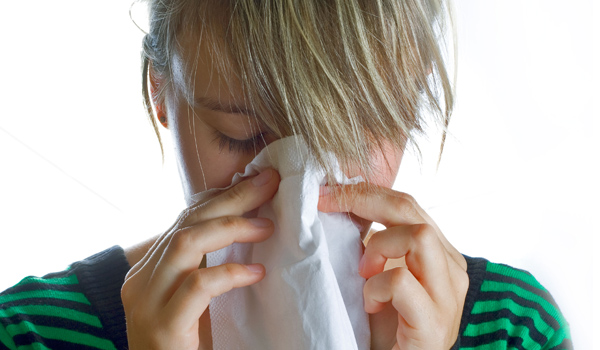New Flu Strain Infects 2 Kids, CDC Says

Two children came down with the flu this summer after being infected with a strain of the influenza virus that originated in pigs, according to a new report from the Centers for Disease Control and Prevention (CDC).
One case involved a boy in Indiana and the other a girl in Pennsylvania. Both children were younger than 5 years old. The cases are not believed to be linked, the CDC said.
The strain of virus that infected the children, called H3N2, is similar to other swine-originating flu viruses that have infected people in the past. However, the strain is genetically unique and has not been identified in people or pigs before. It is a combination of the 2009 influenza H1N1 virus which was responsible for the swine flu pandemic and another pig virus.
The girl, who was infected in August, was directly exposed to pigs at an agricultural fair. The boy, who became ill in July, was not exposed directly to pigs in the weeks before he got sick; however, one of his caretakers was. The caretaker looked after the boy a few days before he became ill.
Flu viruses that have their origins in pigs and other animals do spread to humans from time to time. Between December 2005 and November 2010, 21 cases of people infected with swine-originating flu viruses were reported to the CDC, according to the report.
Because this flu virus is unique, the researchers don't know how well it can spread between people . When this type of species crossover occurs, it rarely results in sustained transmission of the virus between people, the report said. But because the appearance of any "new" strain of flu has the potential to have a severe impact on people, the CDC said it has set up a system to identify and thoroughly investigate these cases.
Pass it on: A genetically unique flu virus that has its origins in pigs has been identified.
Sign up for the Live Science daily newsletter now
Get the world’s most fascinating discoveries delivered straight to your inbox.
5 Dangerous Vaccine Myths What to Do (And Not to Do) to Ease Kids' Vaccination Pains When Flying, the '2 Seat Rule' Might Keep You Healthy
Follow MyHealthNewsDaily staff writer Rachael Rettner on Twitter @RachaelRettner. Like us on Facebook.

Rachael is a Live Science contributor, and was a former channel editor and senior writer for Live Science between 2010 and 2022. She has a master's degree in journalism from New York University's Science, Health and Environmental Reporting Program. She also holds a B.S. in molecular biology and an M.S. in biology from the University of California, San Diego. Her work has appeared in Scienceline, The Washington Post and Scientific American.









